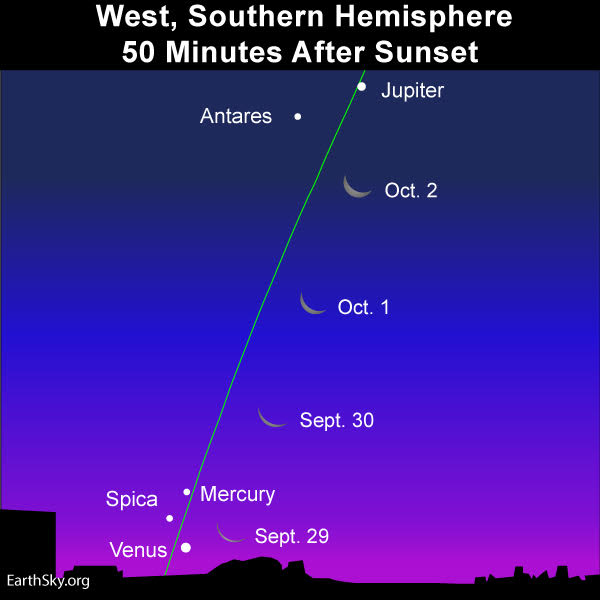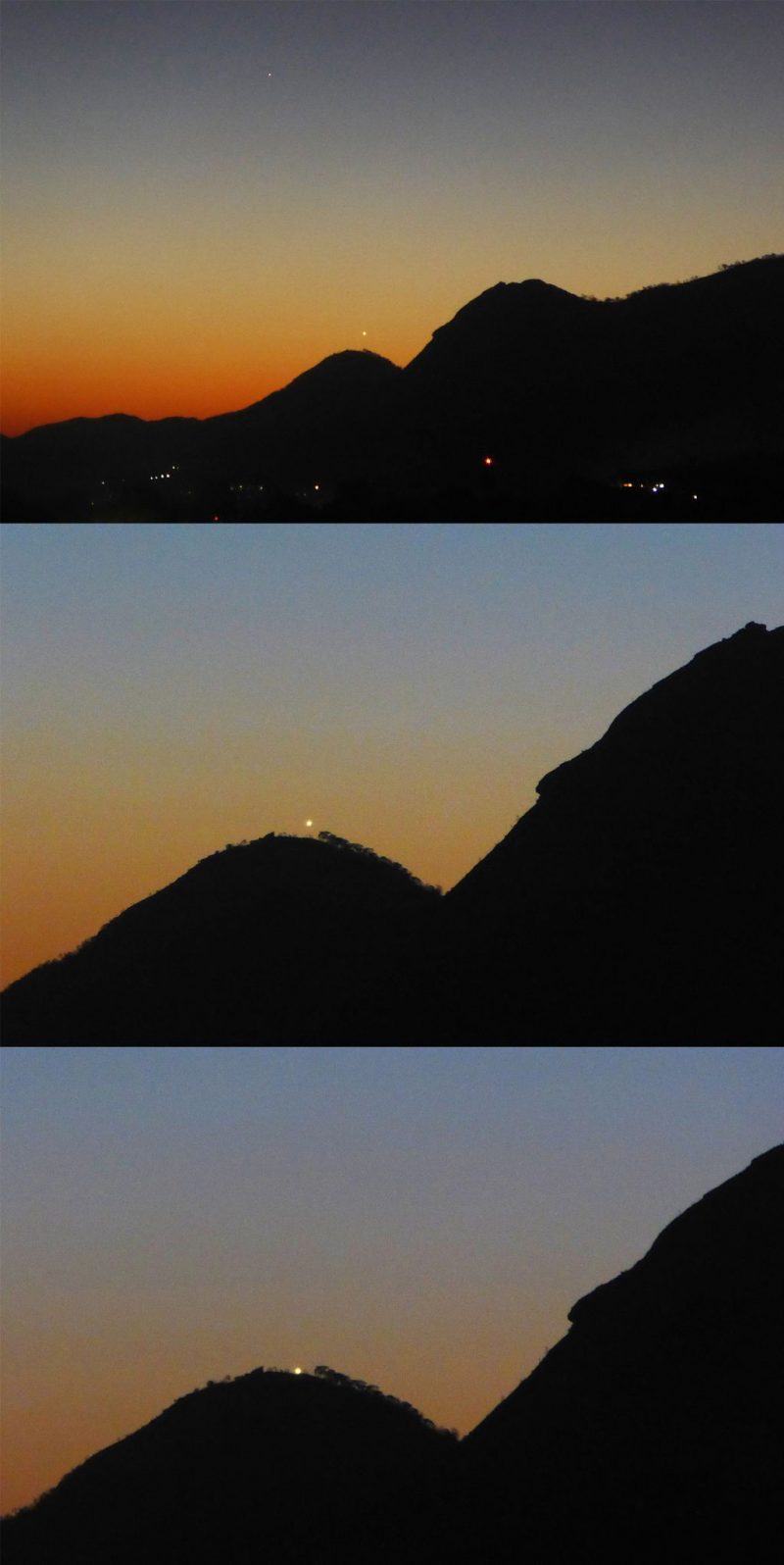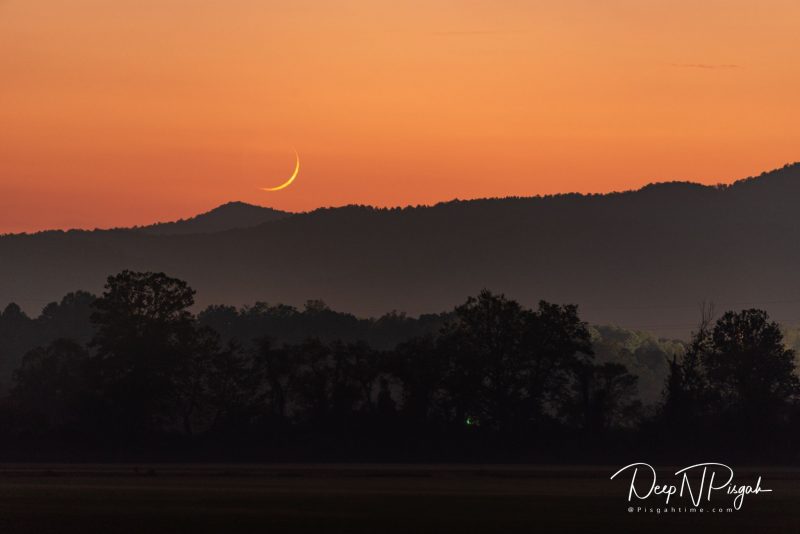On September 30 and into the first couple of evenings of October, the young moon is in the west after sunset. You’ll find it edging closer each evening to the bright red star Antares – Heart of the Scorpion in the constellation Scorpius – and the even-brighter planet Jupiter. For your specific view, visit Stellarium Online.
As the days pass, the moon will shift closer to Jupiter. They’ll be closest around October 3.
Then the moon will go on to encounter the planet Saturn. They’ll be closest around October 5, which, by the way, is International Observe the Moon Night.
EarthSky 2020 lunar calendars are available! They make great gifts. Order now. Going fast!
Now let’s look at the Southern Hemisphere view:

Generally speaking, at this time of year, it’s easier to see the young moon from Earth’s Southern Hemisphere than from the Northern Hemisphere. That’s because the ecliptic – the yearly path of the sun, or approximate monthly path of the moon across our sky – makes a steep angle with the sunset horizon in spring, but a narrow angle in autumn. On the other hand, this particular young moon swings a maximum 5 degrees (10 moon-diameters) north of the ecliptic (5 degrees in ecliptic latitude). That erases some part of the Northern Hemisphere’s disadvantage. This time around, the Northern Hemisphere finds itself in a better position than it usually does for spotting an early autumn young moon.
Visit Unitarium.com to find out the present ecliptic latitude of the moon.
Visit Heavens-Above to know the moon’s place upon the zodiac.
As you can see from the chart directly above, there are also two planets in the west after sunset now. We don’t show them on our Northern Hemisphere chart because they’re so tough to see – as yet – from this hemisphere. But Southern Hemisphere viewers should be able to spot both Venus and Mercury – exceedingly low in the sky, very shortly after sunset – in late September and early October. Both will remain in the evening sky throughout October (and Venus long after that). This is Mercury’s best evening apparition for 2019 for Southern Hemisphere viewers. Check out the glorious shot of the pair taken September 27 from Zimbabwe, by Peter Lowenstein:


Bottom line: Wherever you may live, the young moon is hard to catch on September 29, 2019, but easier on September 30, and on October 1 and 2.











